WILLIAM ACHEFF
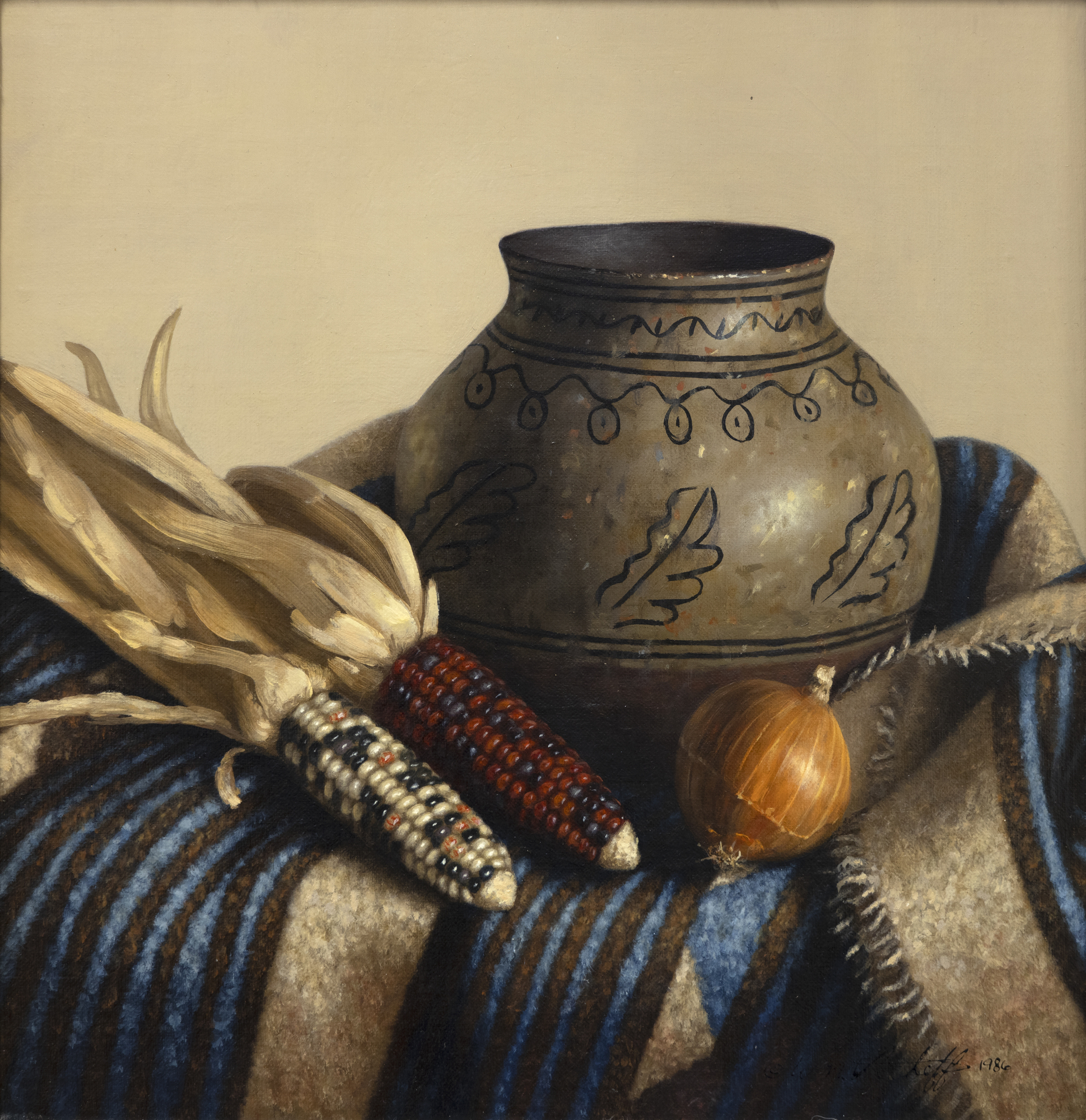
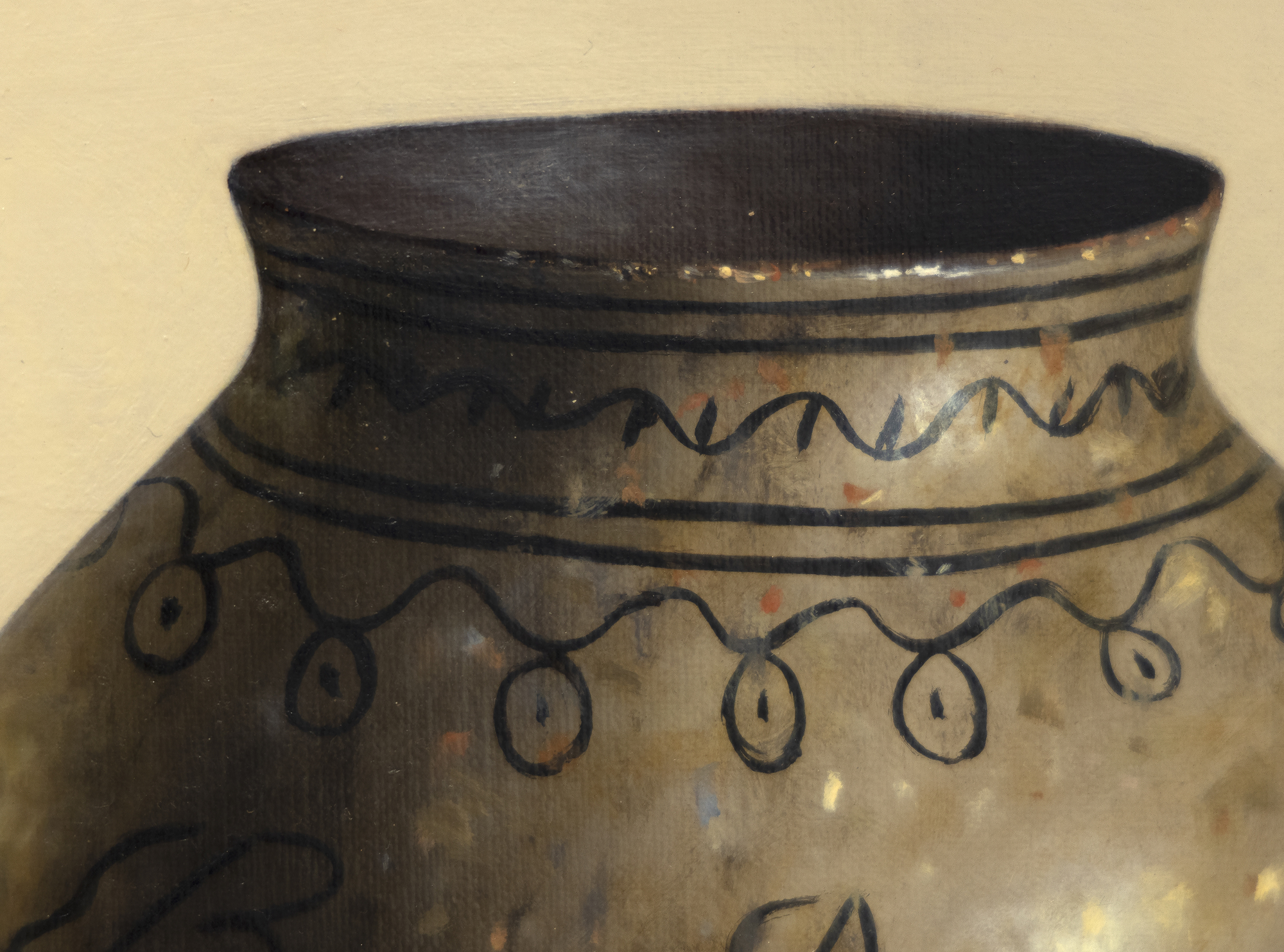
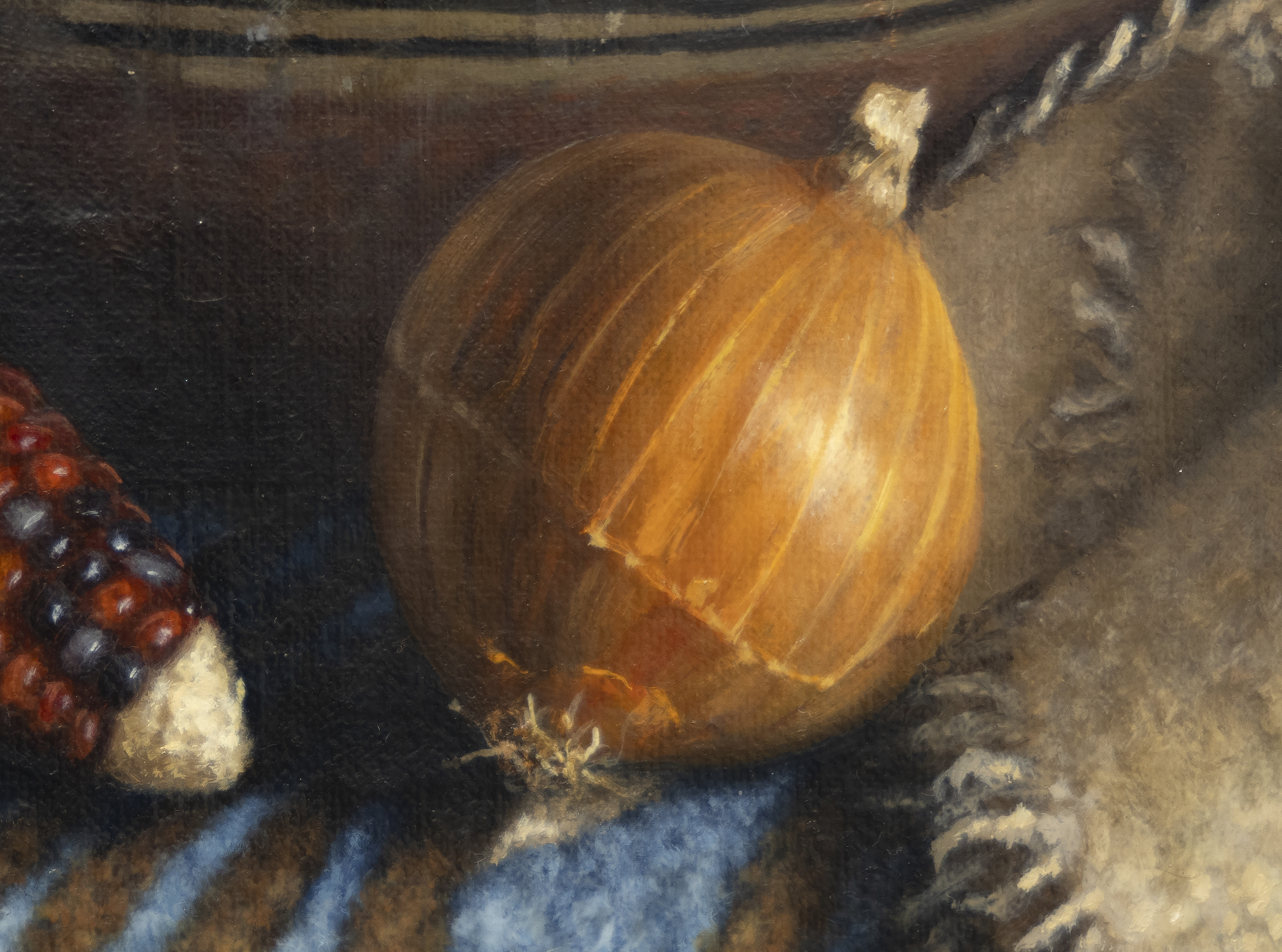
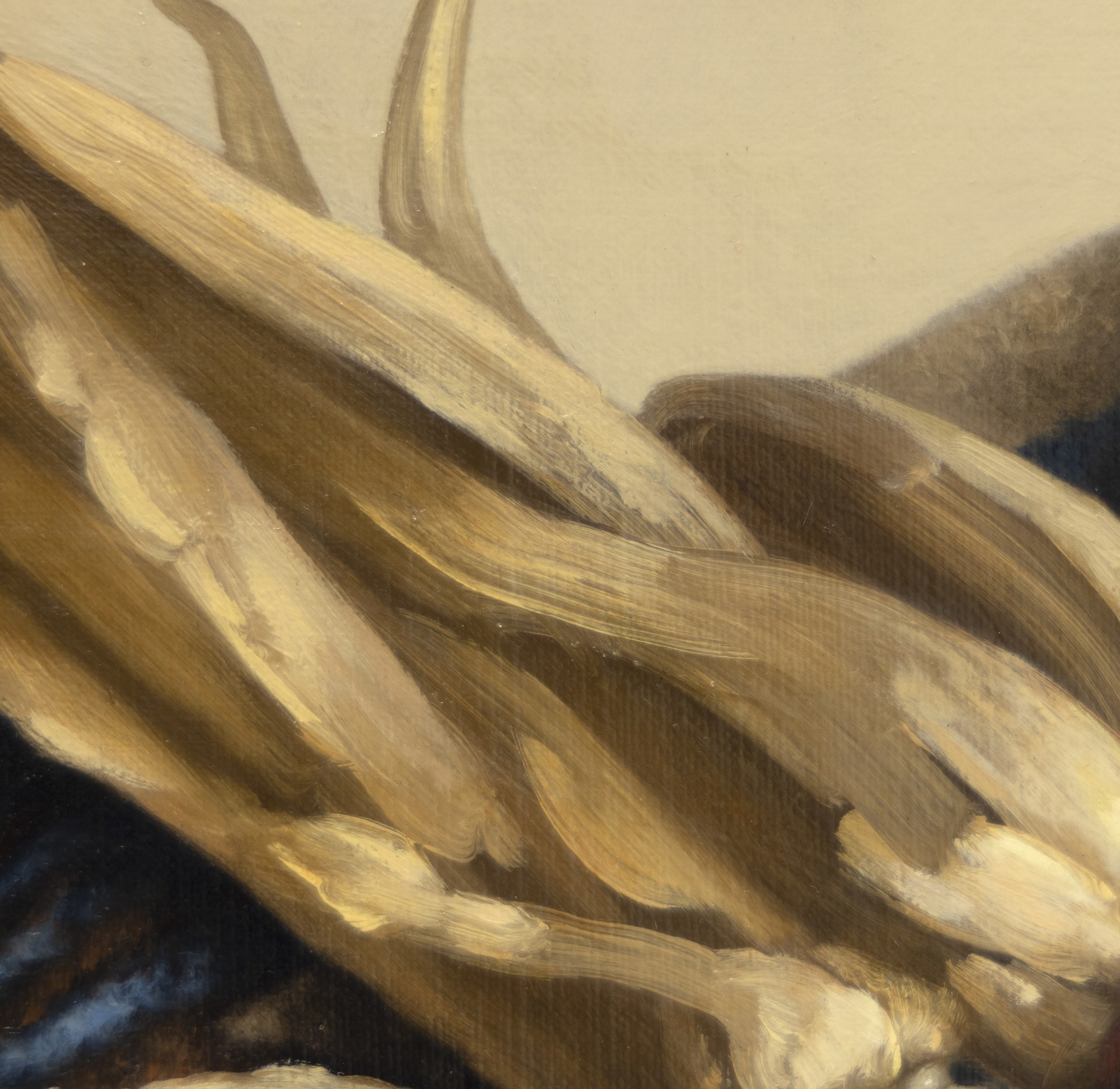
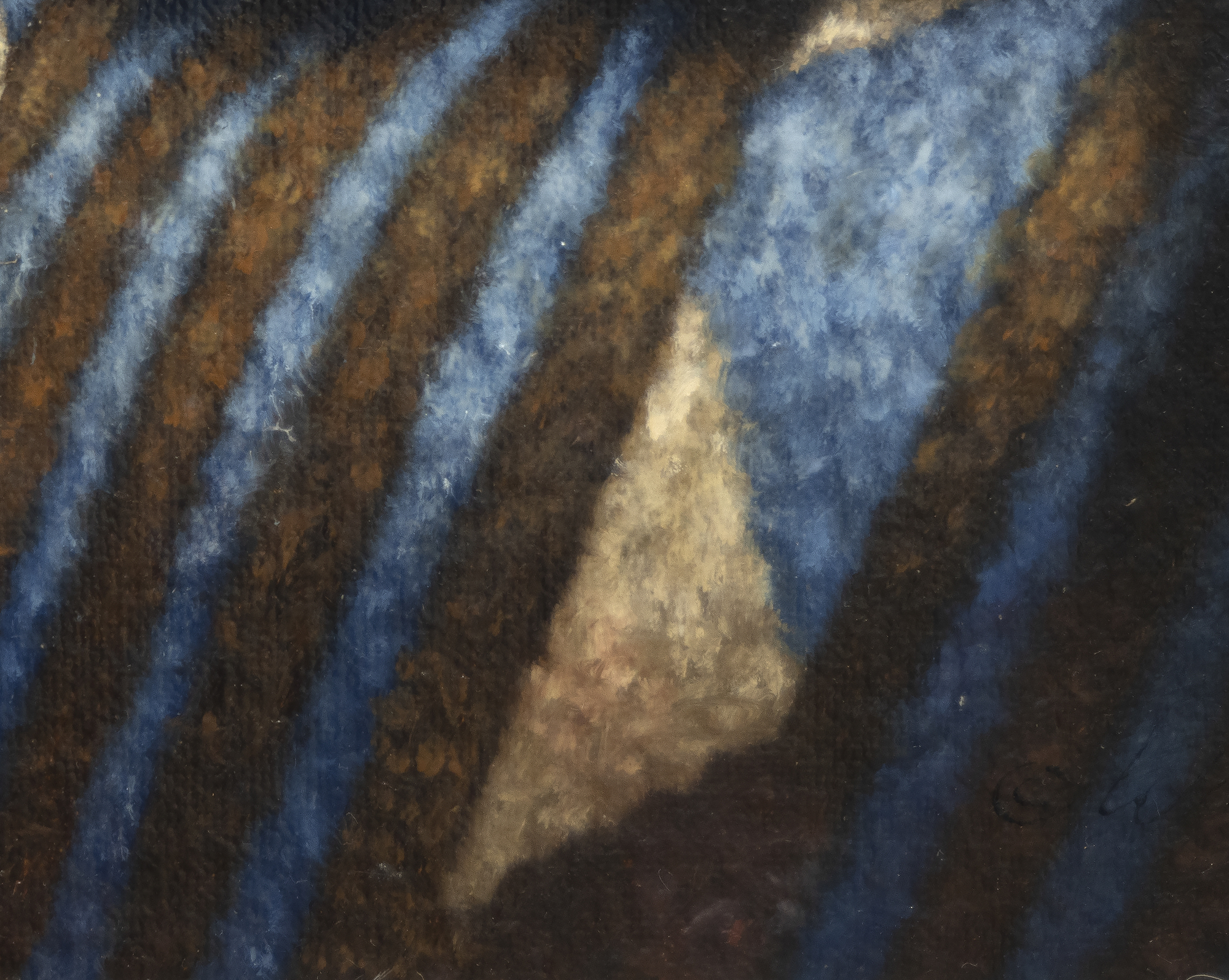
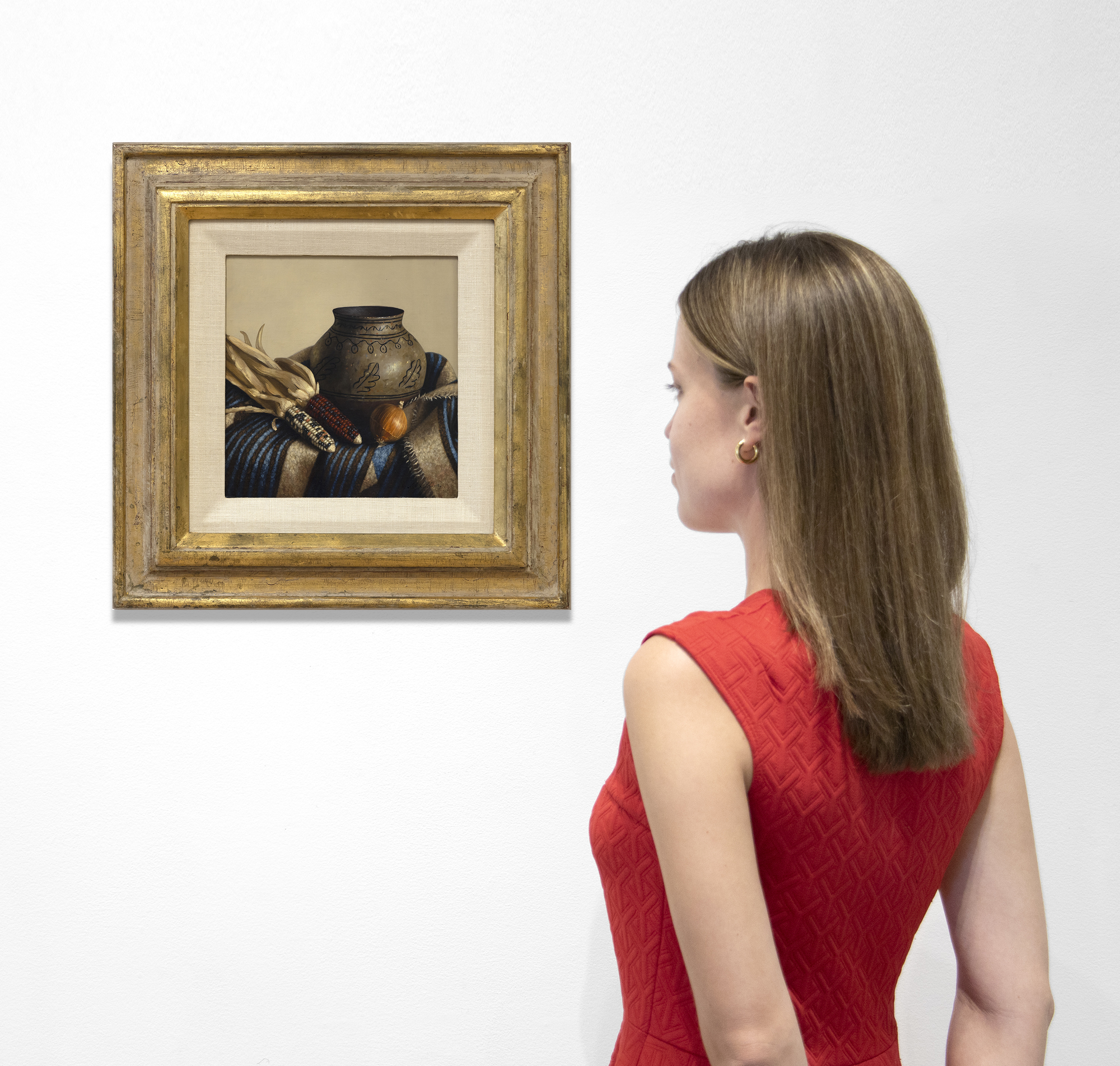
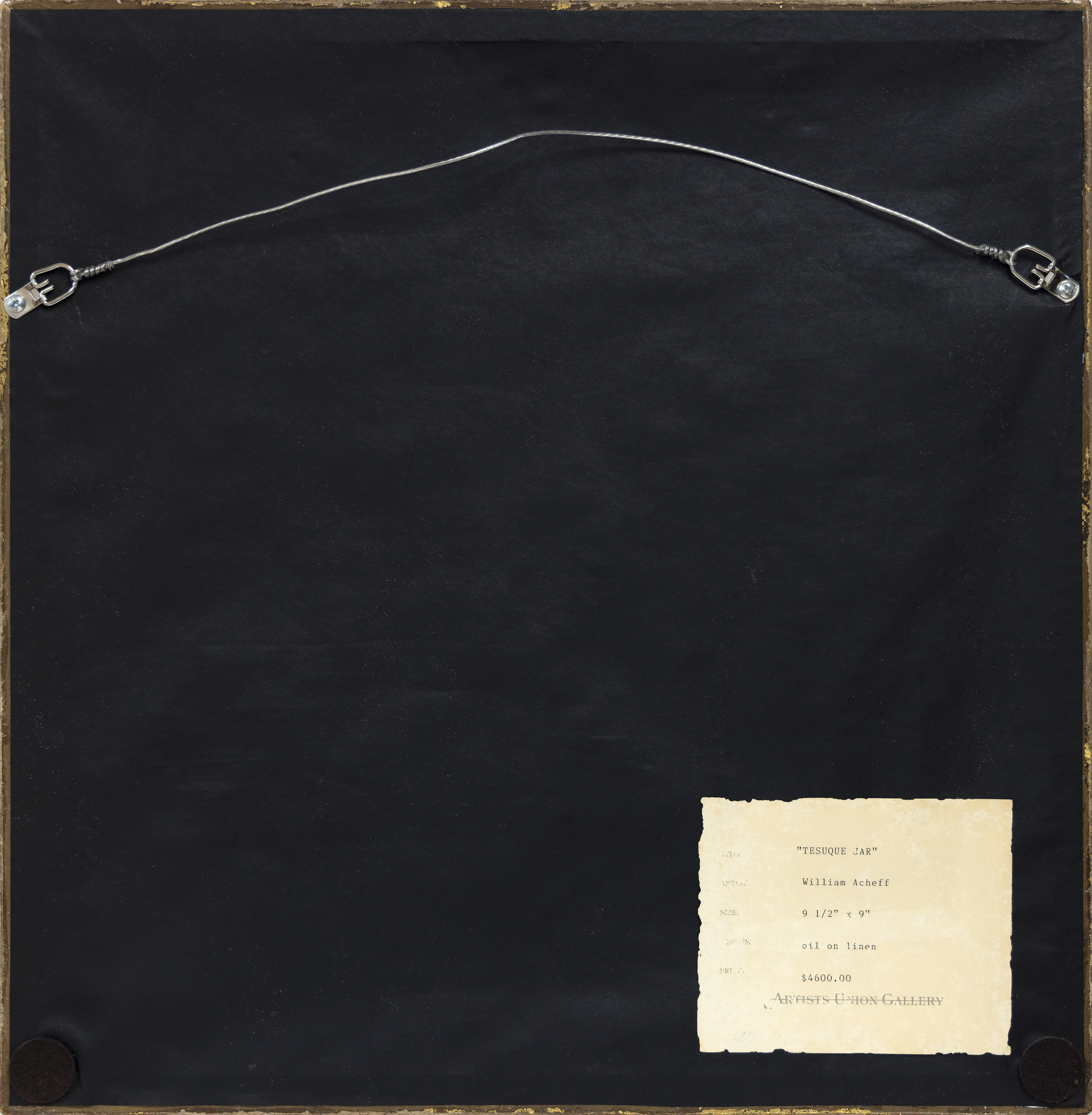
Provenance
Private CollectionBorn in 1947 in Anchorage, Alaska, Acheff is of Georgian, Russian, Scottish, Dutch, and Alaskan-Athabascan heritage. Classically trained in San Francisco, he moved to Taos in 1973 and continues to paint in this widely recognized, distinctive way, often blending artifacts and traditions of the past with contemporary items and settings.
Tesque Jar evinces a clay-body jar (olla) from the Pueblo of Tesuque, Tesugeh Owingeh ("Village of the narrow place of cottonwood trees"), located in northern New Mexico. Their ancestral homelands cover the entirety of O'gah Po'oge (Santa Fe), and the pottery, much of it from the late nineteenth and early twentieth centuries, is highly prized by collectors.


